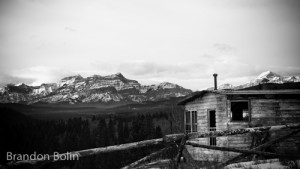Aperture – In optics, an aperture is a hole or an opening through which light travels.
Please wait for it to fully download, Then move your curser over the different f-stops. While going to a smaller aperture watch the detail in the background.
What is Aperture?
It is the size of the opening within your lens as you take your picture (Refer to rings in above example).
Why is Aperture so important?
Aperture affects your camera’s shutter speed (if you are not in manual mode), and your depth of field.
- Aperture affects shutter speed – Increase your aperture too high and you may have issues with your shutter speed while shooting free-hand.
- Aperture affects depth of field (DoF) – Lower your Aperture to reduce the clarity of your image background. This is great to draw your eye to the main subject.
How is Aperture measured?
Aperture is measured in f-stops, thus “f”2.8, or “f”4.0. Moving a full f-stop (f2.8 to f4.0, or f16 to f22 for example) will let in one less full stop of light into the camera. So if we go from f2.8 to f4.0, we let in less light, however increasing the DoF.
What if we don’t want to decrease the light and yet keep the greater DoF? We decreased our light by one stop using Aperture, therefore we can increase our light by lowering our shutter speed by one full stop – the result will have a greater DoF yet have the same amount of light as we would at f2.8. (For more information on Depth of Field, visit our article “Field of Depth”)
Now you are starting to see how Aperture and Shutter Speed are related, hey? It may seem very complicated now – but you will understand with more practise.

How to change Aperture settings?
Most camera’s have an “AV” or “A” option that stand for Aperture Priority. This mode will allow you to change the Aperture, however the camera decides on the correct shutter speed to use.

How do I remember which Aperture setting will let in the most light?
Take f2.8, the one that lets in the most light and turn it into a fraction:
1/2.8 = 0.6 (approximately)
Now take f10 for example and turn it into a fraction:
1/10 = 0.1
The larger number will let in the most light. As you can see from our interactive Aperture example, the shutter blades open up greater as the f-stop reduces in size, thus f2.8 gives us the most light.
Note: Some lenses do go lower then f2.8
Excellent work. Thank you.
This site was very helpful. Thank you for explaining it the way you did!!!
Excellent way of explanation… thanks a lot..
Thnx.. how abt an interactive with all shutter speed, aperture and ISO?
Brandon – a difficult topic explained well with the images – thanks on behalf of my students. Keep up the good work on this site!
Hey guys, Thanks for the comments! Ajith R, nothing yet… but perhaps in the future! You could just grab your own camera in the mean time and try all three out yourself 🙂
This site was very useful, it helped me with my school work. thank you
Hi,
I direct my students to your web sites, but we are getting an error to upgrade our browser.
Can you please still allow us to view the web site. It will take a long time for the school board to upgrade the browser.
Thanks in advance.
Teacher – TDSB – Toronto – Canada
thank you for teaching me about aperture and how they work thank you very much
BRANDON YOU ARE AWESOME. =D